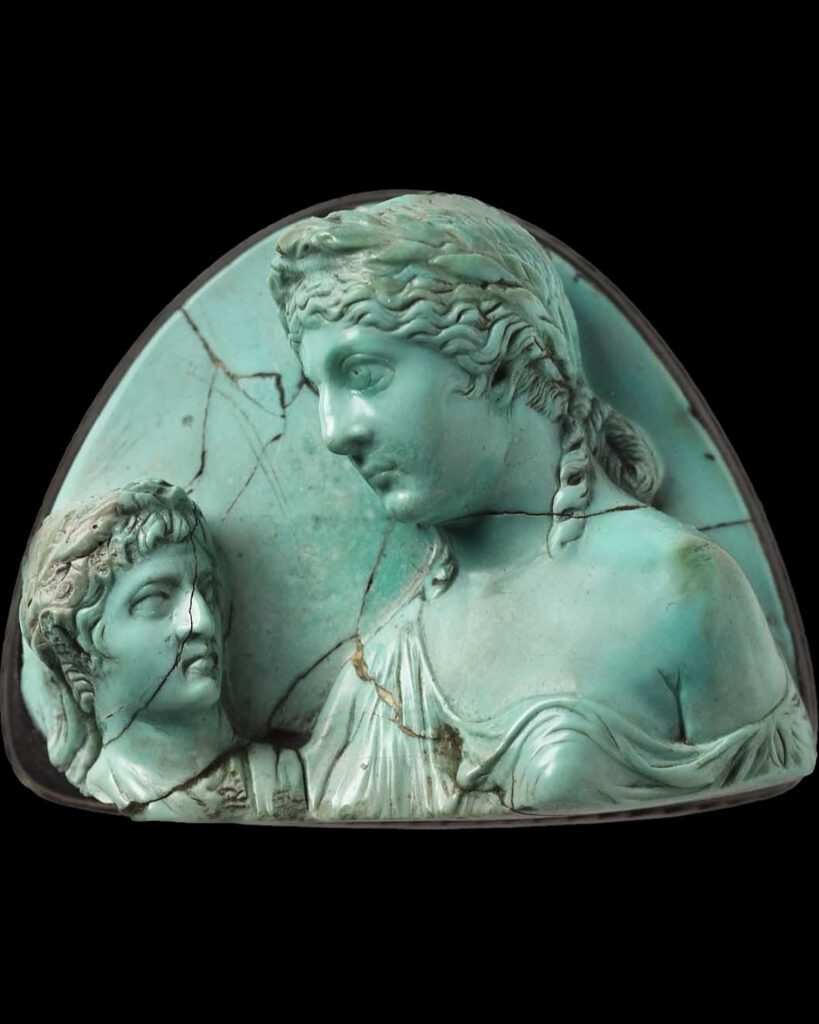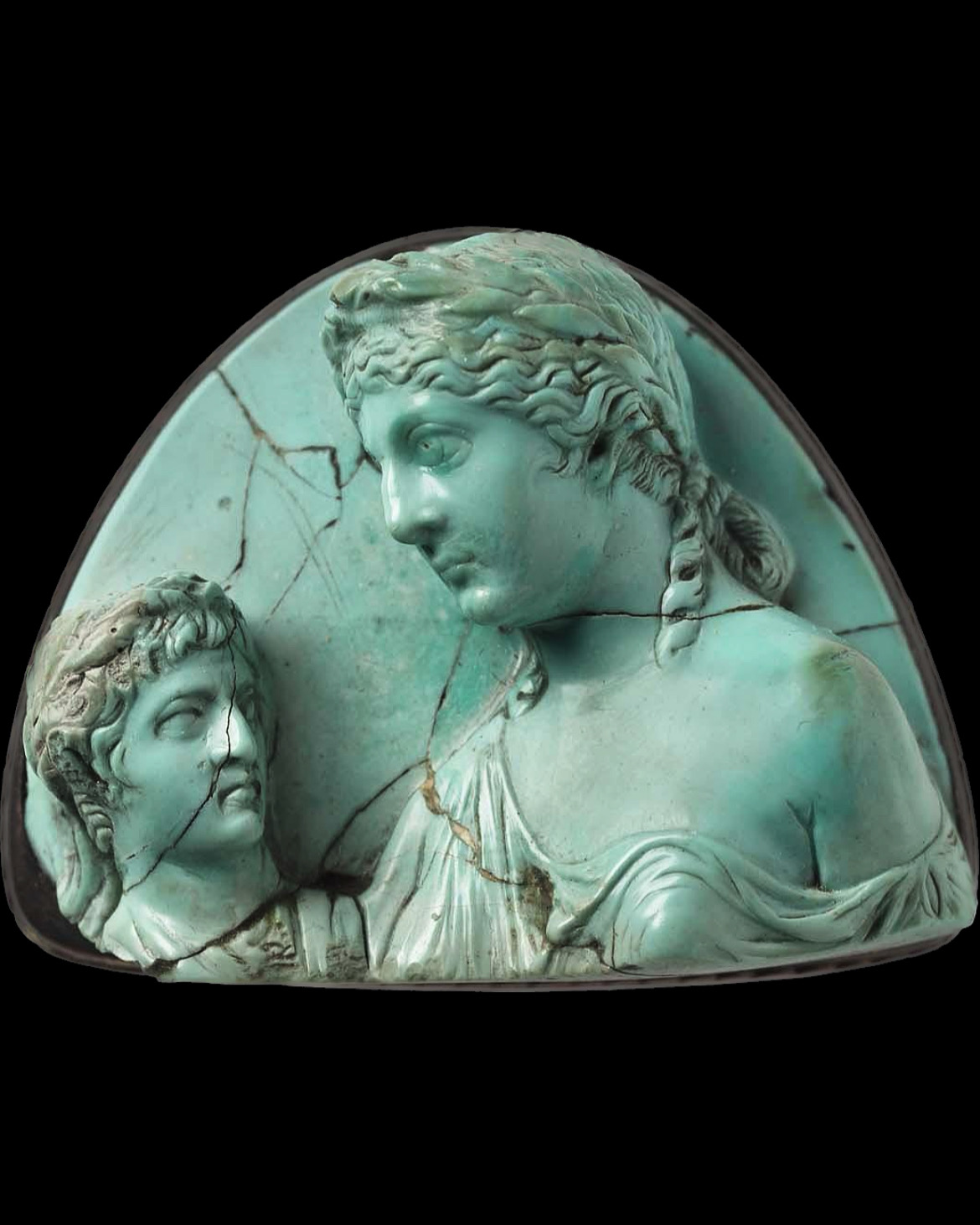I admit it: I don’t overly like Livia, the wife of Augustus, and a true political operator. I dislike her fashionable nodus hairstyle even more vehemently (I’ll save these gripes for another post…). That’s all besides the point here.
This is a masterpiece in miniature (approximately 3 x 3 cm) and frankly a sort of strange one. Referred to as the ‘Marlborough Cameo’ for its 18th century owner, some time later (1899) it was bought at Christie’s by the famous dealer Edward Warren on behalf Boston MFA where it has been ever since.

It’s turquoise (not a very usual choice for early imperial cameos), and broken midway down. Preserved is the somewhat forbidding profile of Livia (notable for her large eyes and prissy little mouth), wreathed, and with her filmy robe slipping off one shoulder goddess-style. She gazes with preternatural attention at a smaller male that seems to sit on her lap.
And this is where things get a bit weird. It has been debated widely whether the little figure in her lap is a child or the under-life-sizes bust of a member of the imperial family. Generally it is agreed that the mature facial features and military attire of the young man speak to a bust rather than a living boy. Two dominant theories held that the bust was either the Deified Augustus or Tiberius. But Elizabeth Bartman has more recently (and more convincingly) argued for the identification of Drusus Maior, Livia’s deceased son.
And that makes it a very moving image indeed: a mother gazing at the portrait bust of her son, dead before his time while on campaign at the age of 29.




